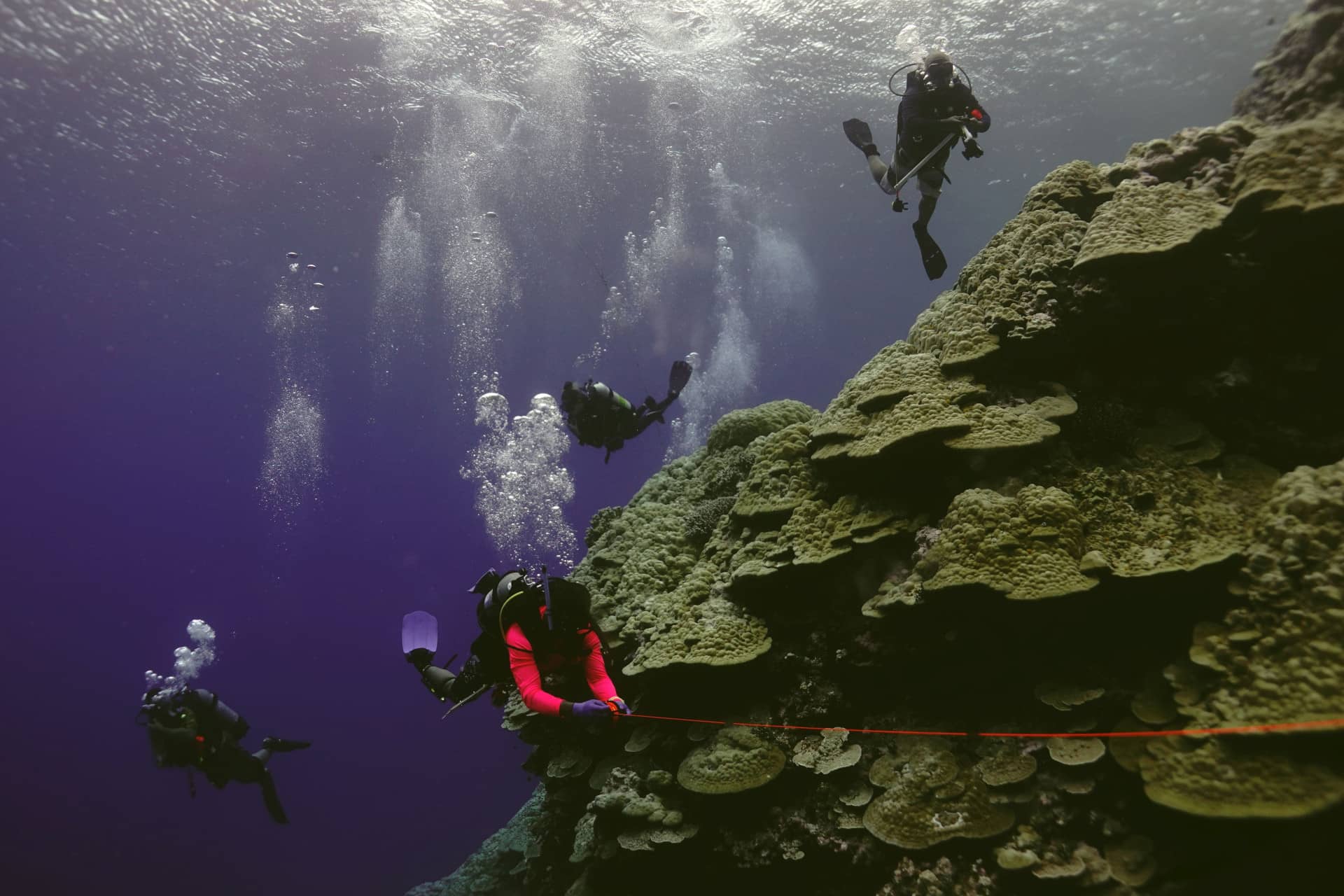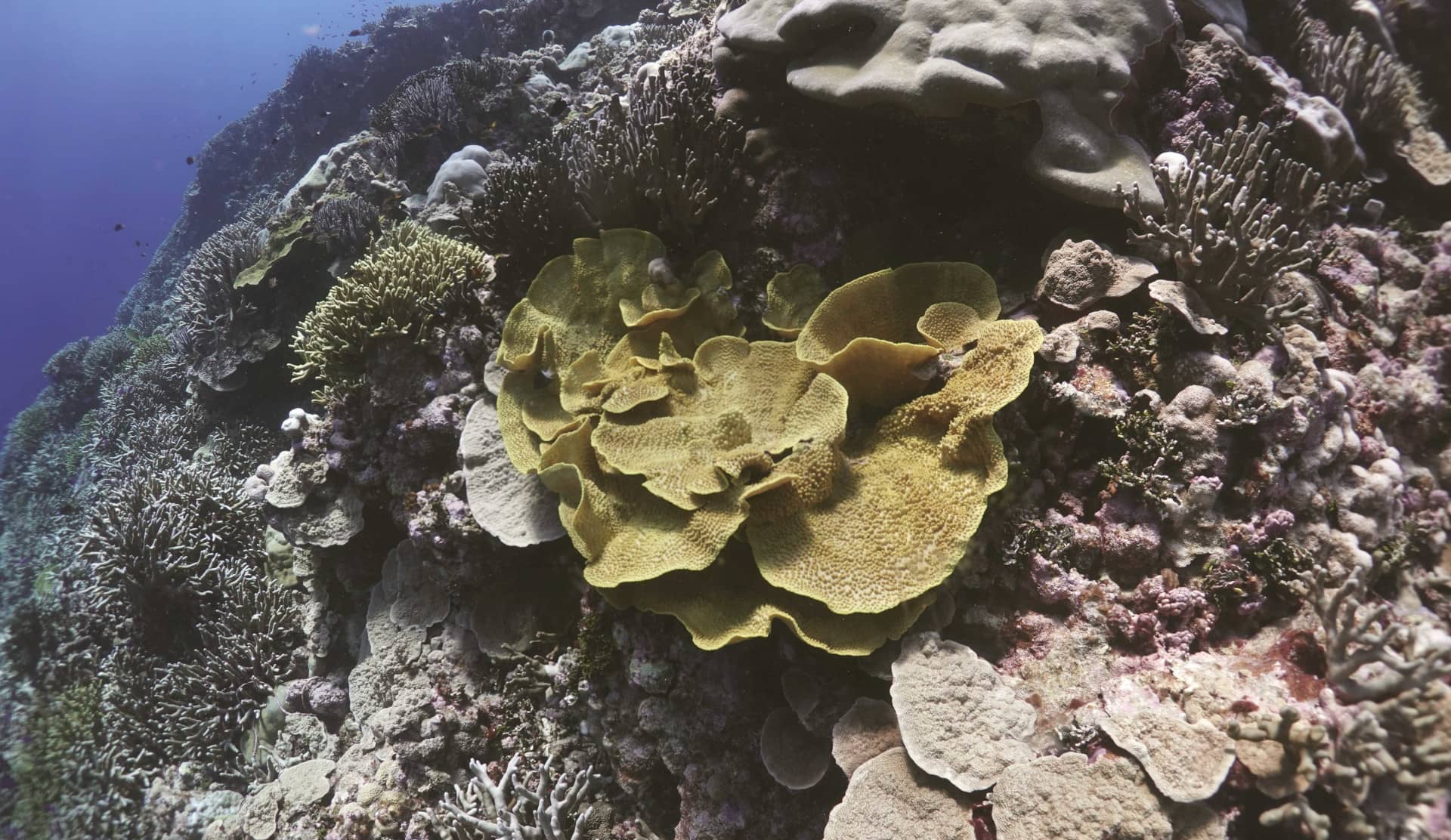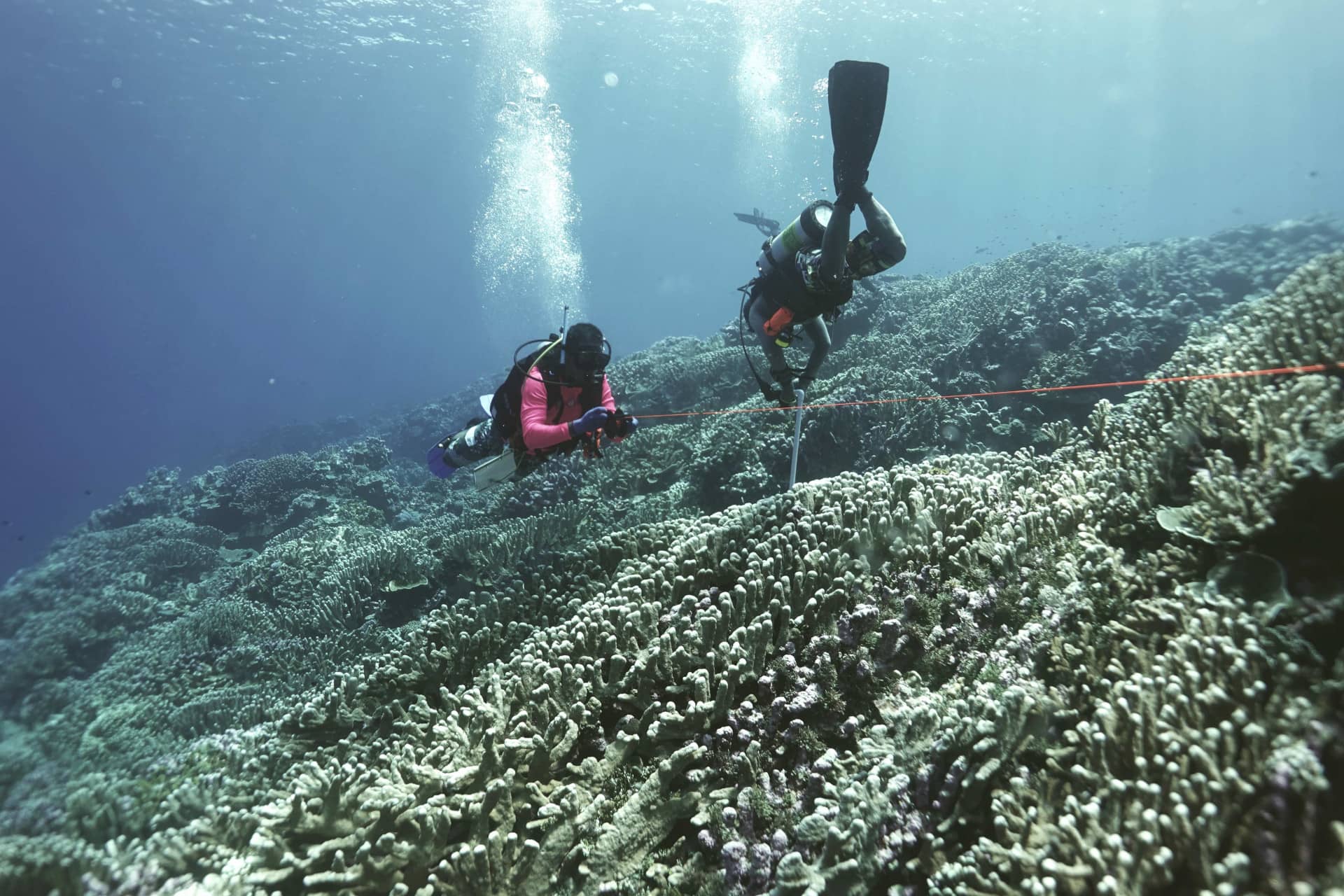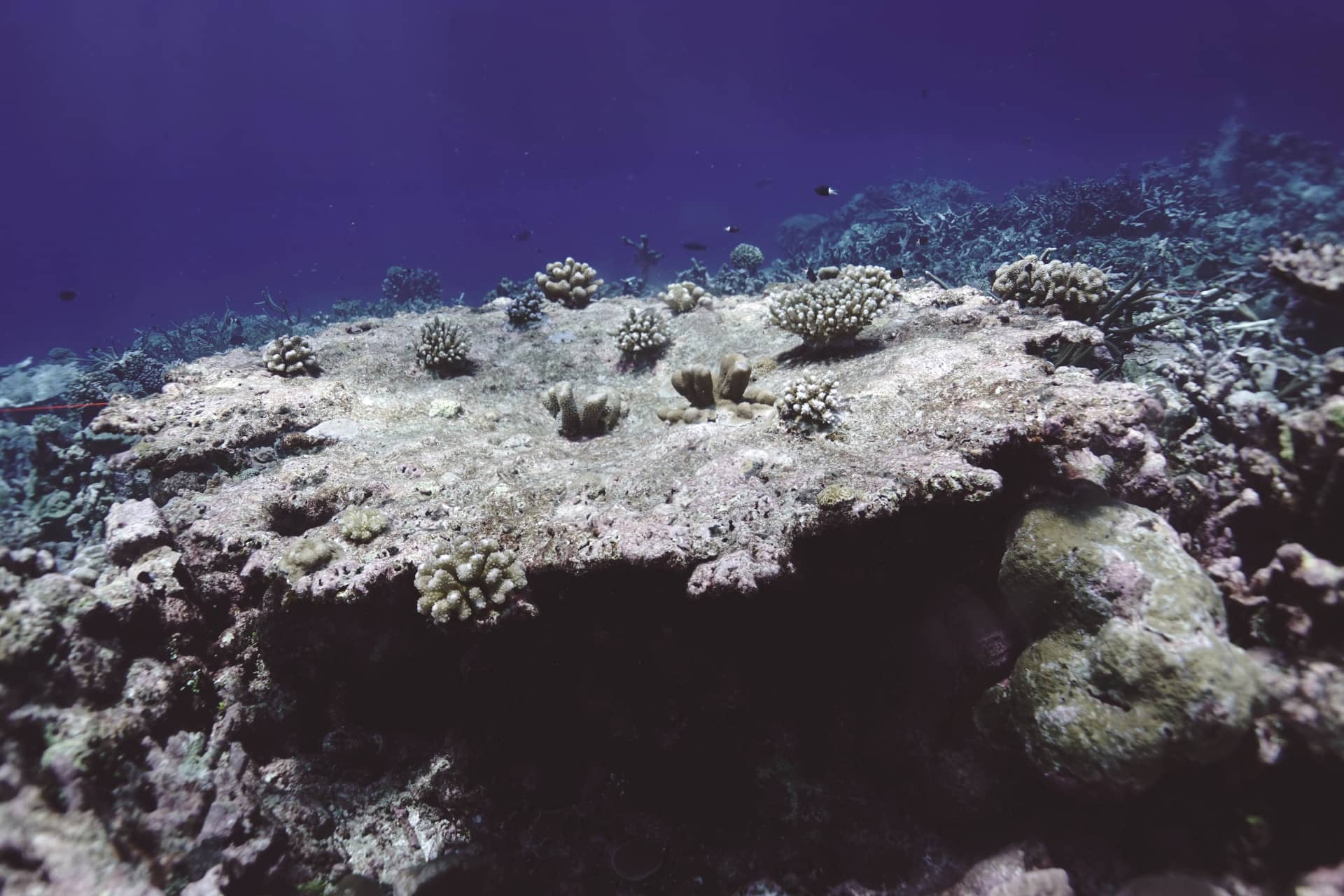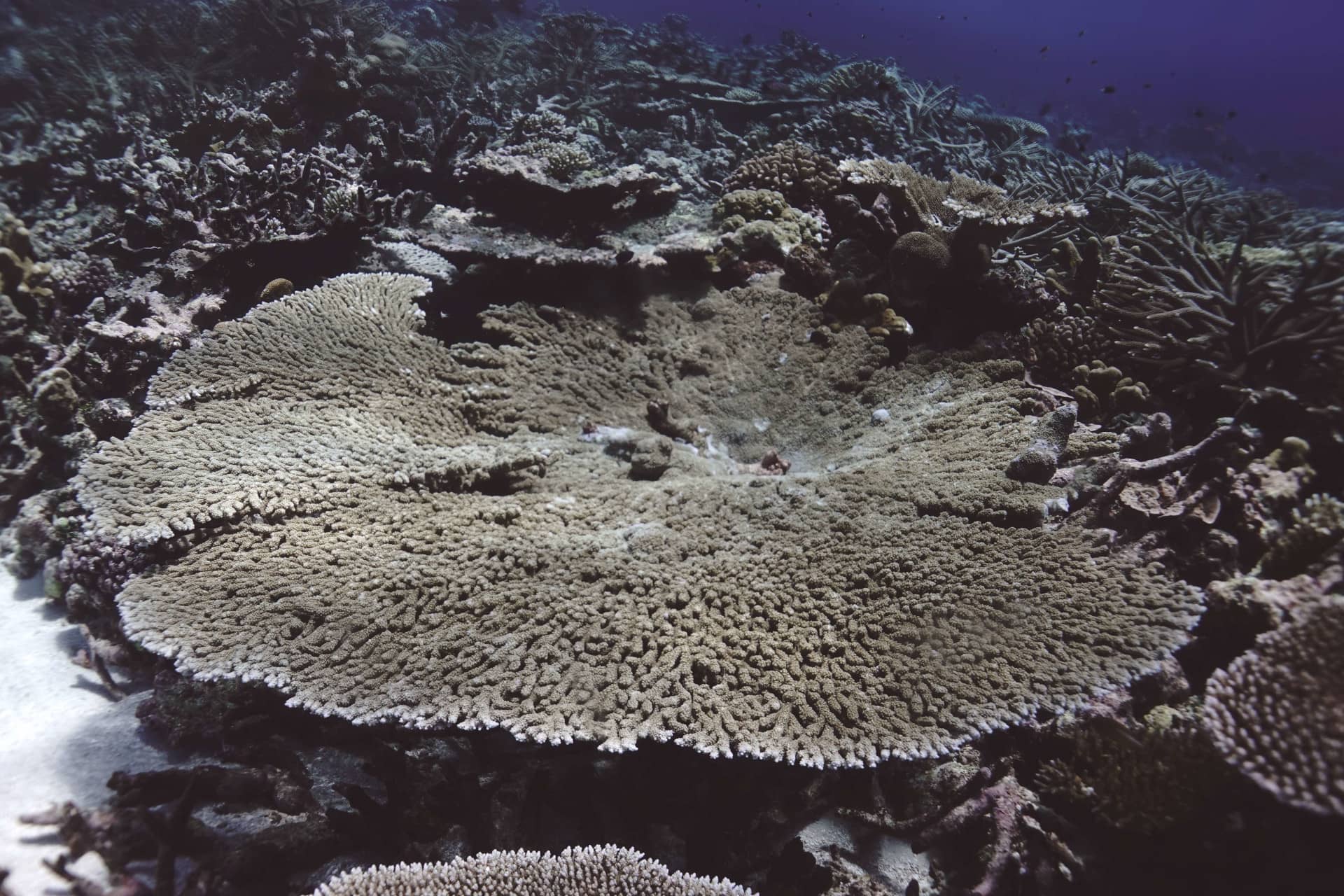"Most rewarding experience": UOG professor is Chief Scientist on National Geographic expedition
"Most rewarding experience": UOG professor is Chief Scientist on National Geographic expedition
"Most rewarding experience": UOG professor is Chief Scientist on National Geographic expedition
2/16/2024
The waters around Guam bore witness to a significant coral bleaching event several years ago. Rising sea temperatures during the last El Niño stressed corals to the point of expelling their symbiotic algae, draining them of color and leaving behind whitened skeletal frames along the ocean shallows.
Corals around Guam weren't the only victims of this climate stressor. Reefs in the
Federated States of Micronesia weren't spared from the bleaching event, but the story
somewhat differs for reefs in the FSM's remote atolls. There, researchers are finding
that more corals managed to survive the event compared to the main islands in the
FSM.
Scientists anticipated that, with more fish around to help promote growth and less
pollution affecting them, reefs in these atolls would have a greater chance for recovery,
with new corals growing to replace those that died. But scientists had "no clue" corals
there would also be more resistant to bleaching, according to Dr. Peter Houk, Professor
of coral reef and fisheries ecology at the University of Guam's Marine Laboratory.
"In fact, based on what we know about the global scientific literature, it wasn't
clear that they would be," Dr. Houk said.
These observations were made during an expedition into the FSM atolls - a major collaboration
between UOG, FSM national and state governments, National Geographic Pristine Seas,
Micronesia Conservation Trust, Scripps Institution of Oceanography, and Waitt Institute.
Unique UOG tie with National Geographic
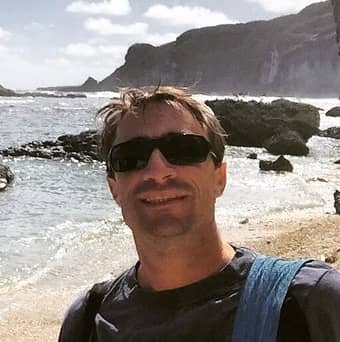
The collaboration marks the first relationship of its kind between UOG and the National
Geographic Society, according to Dr. Houk, who served as the chief scientist for the
expedition. Click here for a video of the expedition https://www.instagram.com/reel/C3TsoCOvgYZ/?igsh=NDZ3M256enM3enJk
He credited the opportunity to the development of a larger scientific network fostered
through the University.
Since coming to UOG in 2013, Dr. Houk has received small-level grants to work with
Micronesia on coral reefs and fisheries, which has been supporting his students. Those
students are doing great work in places like Yap, Kosrae and Saipan, each in different
systems with a focus on management, Houk said.
"I think what happened was people started realizing, 'Hey, this is a pretty powerful
network.' And we had a chance to help engage the Federated States of Micronesia."
A network involving National Geographic is a big win, Dr. Houk said.
"The amount of marine resources in FSM waters is insane ... and having UOG in and working with that, and getting students in the mix on that is awesome," he said.
In addition to coral reefs, scientists are assessing deeper and open waters around
the FSM atolls to get a comprehensive look at their resources.
The expedition began in early October 2023 and wrapped up in late November 2023. Starting
from Kosrae, the expedition covered more than 2,000 miles and visited 10 to 12 atolls
before reaching the end of its journey in Yap.
“The expedition is one example of the role some of our faculty play in impactful research,” said UOG President Anita Borja Enriquez. “And as they take leadership roles alongside nationally recognized research institutes, in this case with National Geographic Pristine Seas and other partners on the health of corals and reef ecosystems in the Western Pacific, they bring more depth in how they teach in UOG classrooms.”
With climate change well underway, one of the main goals for the expedition is to
understand coral resistance to bleaching, their recovery or lack thereof, and the
impact of human presence.
Those two words - "resistance" and "recovery" - combine to form "resilience," or how
prepared organisms are to "fight the future," according to Dr. Houk.
Another major goal is to inform resource management guidance for the outer atoll communities
and management policies for FSM national government. The project is also meant to
enhance the capacity of local scientists, with 12 scientists from the FSM states participating
in the expedition.
Opportunities at UOG for Western Pacific region students
It was also an opportunity to tell regional students about opportunities at UOG. According
to Houk, the expedition team reached out to marine science students in community colleges
at each stop of their journey. These students were able to tour the boat and Houk
was able to meet them and tell them about the Micronesia reef monitoring program at
UOG.
"It's one thing to hear about UOG's program, it's another thing to hear about UOG's
program while you're standing on a National Geographic boat next to a submarine looking
at new species of coral found in (their) waters," Dr. Houk said.
Some of his graduate students on the expedition were "getting the most rewarding experience
of their lives. It's amazing," he added.
Dr. Houk has begun incorporating information from the expedition into his lessons.
"For my population ecology class ... we learned the fundamentals of how predator/prey
relationships change the whole dynamics of food webs, and change the entire ecosystem,"
he said.
"That's exactly the discussion that we had through some of the (expedition) photos
and some the learning that we got from the class literally two days after return.
And this will all continue," he added.

